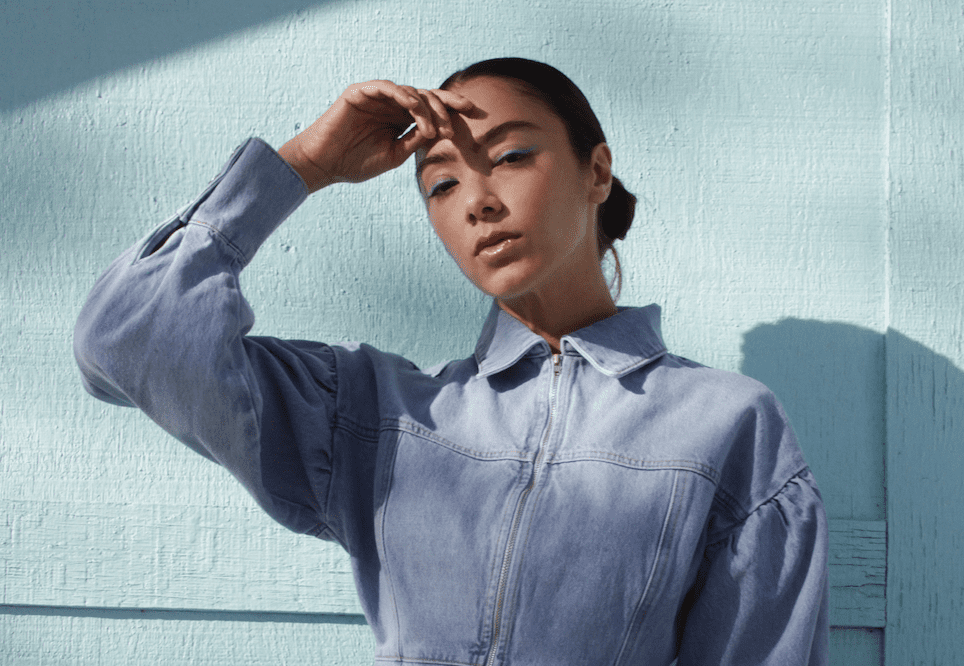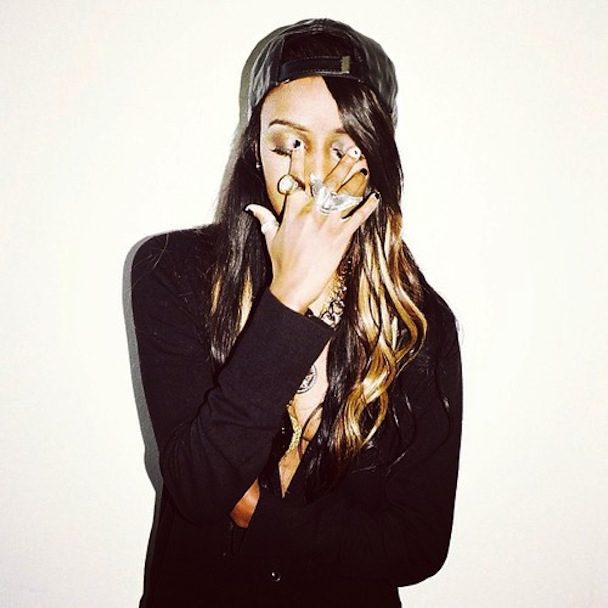

L.A.-via Seattle singer, songwriter, and spoken word artist Hollis Wong-Wear, known simply as Hollis, is redefining herself and going solo. Until now, Hollis has been best known for her contribution to Macklemore and Ryan Lewis’ 2013 debut GRAMMY-nominated album, The Heist, with the song “White Walls,” and for her role as front-woman of popular Seattle group, The Flavr Blue.
But, come 2022, Hollis releases her debut solo full-length—an alt-pop album entitled Subliminal, which she wrote and recorded almost entirely during the pandemic. Today, Hollis premieres her third single from the forthcoming album, “Let Me Not,” a vibrant-yet-melancholy track that marks Hollis’ first collaboration with Ryan Lewis since their work on The Heist.
“Let Me Not” also marks one of the first music videos she’s ever directed—something she’d like to do more of going into 2022. “I have a lot of interests as a filmmaker,” says Hollis. “Between my work directing the ‘Let Me Not’ video and thinking about like moving forward with the other videos, I want to make sure they’re artistically cohesive.”
Hollis, who is originally from Petaluma, CA, grew up immersed in the Bay Area’s spoken word and underground hip hop scenes, which played a big part in the trajectory she’s on today as an artist.
“I first sparked my own original creative work by being in spoken word poetry and slam poetry through an organization called Youth Speaks,” says Hollis. “When I was growing up in high school, there was the hyphy movement and Bay Area hip hop in general, underground rap, [with artists like] Hieroglyphics and DJ Shadow. That really was exciting to be a part of as a young person.”
After high school, Hollis moved to Seattle to go to Seattle University, where she studied history. When she wasn’t hitting the books, Hollis followed her passions for spoken word and music and found herself spending more time on her own creative work than she did in the Bay Area.
“I honestly didn’t make music myself until I moved up to Seattle. I sang in choir and performed in musical theater and stuff like that,” she remembers. “I was a performer but I wasn’t a songwriter by any means until I started my first band up in Seattle with my friend Maddy, which was called Canary Sing.”
Through performing with Canary Sing, networking within the slam poetry community, and hanging out at some of Seattle’s biggest hip hop hubs, like Hidmo, a now-closed Eritrean restaurant and bar that hosted regular hip hop events, Hollis got to know the pair that would soon become the biggest names in Seattle hip hop—Macklemore and Ryan Lewis.
“A lot of people came through Hidmo and that’s… how I ended up getting connected with Macklemore and Ryan Lewis in an official capacity. He had asked me to be the producer of a music video that would end up being [the] ‘Wing$‘ video,” says Hollis. “Basically four of us worked for months on a shoestring budget… and very scrappily made that first music video. The song wasn’t done – I actually ended up cowriting the hook of that song and working with a children’s choir to perform it. When I started working with them, I had no idea I was going to be a featured singer and songwriter someday.”
Hollis became closer with Lewis and Macklemore, and their friendship led to her eventual feature and songwriting on The Heist track, “White Walls,” with Schoolboy Q.
Since the success of The Heist a lot has changed for Hollis. In 2015, she left Seattle for L.A., where she currently resides. According to Hollis, she wanted the change in scenery to challenge her creatively—and it ended up giving her the courage to step out on her own with the forthcoming album, Subliminal.
“I don’t know if I really would have allowed myself to come into my own as a solo artist in Seattle,” Hollis muses. “I think I’ve always loved collaboration to the point that I’ve been dependent on collaboration and it’s scary to be a solo female artist. It’s freaky. And I think I didn’t feel I needed to do that in Seattle because I was like, oh I’m already this personality, people know who I am, I have this band. The challenge wasn’t really there for me to do my own solo thing and I didn’t know how to do my own solo thing.”
Starting over in L.A., Hollis realized the solo artist inside her needed nurturing—and by February 2020, Hollis released her first solo EP half-life, a tender-hearted, intimate 5-song project. Then the pandemic hit, thwarting Hollis’ plans to tour with Half Life. She took her YouTube series Hollis Does Brunch completely virtual to benefit those impacted by the pandemic. And she dove into writing the songs that would become Subliminal.
While creating Subliminal, social distancing took away her ability to collaborate in the traditional ways, so, with the exception of “Let Me Not,” all the songs on the new album were written remotely over Zoom with her collaborators. After making the album in this way—which she says felt bizarre and isolated at first—Hollis feels more confident in who she is as a solo artist. That new-found self-possession saturates “Let Me Not.”
“Figuring out how to collaborate with people remotely [meant finding out] how to feel really solid with myself and be literally alone writing, which definitely shaped the way this album came out,” she says.
“Let Me Not” is the only song Hollis recorded in-person—negative COVID-19 tests in hand—with Ryan Lewis, and is one of the most personal songs on the album. “That song was very much ripped from my journal,” she explains. “I was doing a lot of journaling towards the later half of 2020 and the chorus refrain, ‘let me not bring down the vibe,’ was just literally something I had written in my journal three days before our session.”
Now transformed into an upbeat headbanger with a sneaking, ominous keyboard line, the song and its video depict Hollis, obviously feeling weighed down by the heaviness of the world as she knocks her “head on the wall all night” and “feels like throwing herself out the window.” We see the artist’s helplessness and confusion as she sits in an empty theater, lies alone in the grass, and performs a house show with an angry grimace.
In the end, she doesn’t want to “bring down the vibe” by being honest and open about her emotional state and the state of the world—even to herself—a notion that captures the pain, anxiety, fear, and descent into numbness that has gripped many of us since March 2020. That said, the track is anything by upsetting— its honesty makes the listener feel a little less alone.
Why get so existential, even political, in a pop song? Hollis points to her long history of social activism and volunteerism and her firm belief in using her platform to promote social change and awareness. As is evident in “Let Me Not,” as well as another recent single “Grace Lee,” about Chinese-American social activist Grace Lee Boggs, writing pop music is not about Hollis’ ego, but about making a positive impact on the world.
“I’m not super excited about the premise of building my personal brand. If it’s for a larger purpose and I can do so to encourage connectivity, that’s when I feel most empowered and excited about the work,” says Hollis. “I love pop music and I think what really motivated me to come to L.A. was that I’m very passionate about my personal politics and about learning and how I can integrate that into [my music]. There’s so much potential in popular culture to shift and create change.”
Follow Hollis on Instagram, Twitter and Facebook for ongoing updates.



